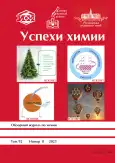The experimental and theoretical chemistry of 1,2,3,4-tetrazines have been actively studied in the last 20 years. The increasing interest in this class of compounds is due to the fact that the 1,2,3,4-tetrazine ring is a promising building block for the development of energetic and physiologically active compounds. The reviewconsiders various types of 1,2,3,4-tetrazines including completely unsaturated nonannulated tetrazines and their N-oxides; nitrogen-substituted tetrazines; annulated tetrazines with a nitrogen atom common to two heterocycles; 1,2,3,4-tetrazine 1,3-dioxides fused to benzene, pyridine, 1,2,3-triazole or 1,2,5-oxadiazole ring; and also 1,2,3,4-tetrazine 1,3-dioxide fused to one more 1,2,3,4-tetrazine 1,3-dioxidering. Methods of synthesis and reactivity of these compounds, their crystallographic features, spectral characteristics and thermal stability are described. The results of quantum chemical studies for 1,2,3,4-tetrazine derivatives are presented. The prospects of using 1,2,3,4-tetrazines as energetic compounds are discussed.The bibliography includes 189 references.
 RCR5082
RCR5082


 RCR5087
RCR5087


 RCR5088
RCR5088


 RCR5089
RCR5089










